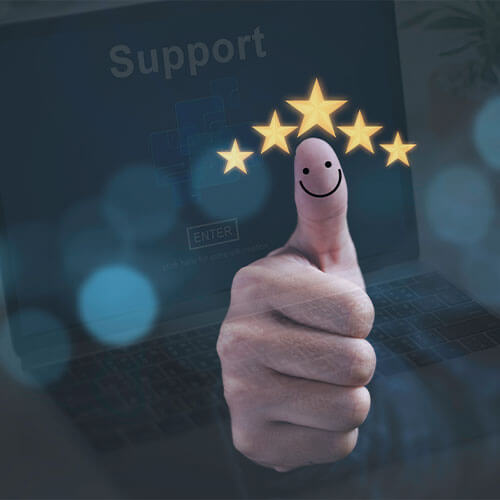Customer satisfaction is a critical factor that no value-driven service provider should overlook. It allows IT departments to assess how well their IT help desks are meeting end-user/customer needs, how well their IT service management (ITSM) strategies are performing, and how their customers are feeling. Here are five ideas for improving client satisfaction at your IT help desk.
Tip #1: Prioritize customer pleasure
Set the expectation early on, especially for new employees, that customer satisfaction is the most important factor. Everyone in your organization must believe that the client experience is everything. You can have world-class processes and tools, but if your employees lack the necessary customer service skills, your clients will suffer and your satisfaction scores will plummet.
Tip #2: Broaden your horizons
Provide individuals with options at all times. Because not everyone is technically savvy, some clients prefer to speak with a help desk representative over the phone and be guided through the necessary steps. Some people prefer to communicate through instant messaging or email. Self-help and self-service are preferred by some people. And it will depend on the circumstances for many. As a result, make your help desk available via a variety of access and communication channels so that your clients can use it in the most convenient manner for them and their situation.
Tip #3: Have daily stand-ups at the support desk
Allowing operational issues and ticket wait times to accumulate is a bad idea. Hold daily stand-ups with your help desk team and other support workers as needed to get a handle on any recurring issues, old tickets, or anything else causing business pain so you can prioritize accordingly.
Tip #4: Give your end users more control
If you provide self-service and self-help, make sure your customers understand how to use them. Offering slightly faster turnaround times for self-service tickets is one approach to encouraging people to use self-help solutions.
Tip #5: Give your agents more power
Encourage knowledge sharing among your agents in order to upskill and empower them. Examine your most common incident and request types to see if there are any useful fixes for your most frequently-logged tickets that can be documented.
Tip #6: Request feedback
If you haven’t already, it’s time to start soliciting regular end-user feedback. Consider conducting customer satisfaction surveys to gather feedback from your customers on what works and what needs to be improved. How can you know what your customers’ real pain issues are if you don’t interact with them?
Tip #7: Respond to feedback
Respond to customer comments so that they know you care about them and that the quality of your service and support is important to you. Make certain that any enhancements are documented, prioritized, and, if possible, implemented. If it is not possible to work on them due to time or resource constraints, are there any workarounds or “next best thing” solutions available?
Tip #8: Increase the percentage of first-time fixes
Keep an eye out for easy victories. In most cases, password resets and print queue clearing should take minutes rather than hours. Continue with tip #5 by collaborating with problem-solving personnel to examine the next layer of frequently-logged calls and describe workarounds and fixes for everyone. The quicker the problem is resolved, the happier the customer is, and the help desk representative has more time to handle the next call.
Tip #9: Make gradual changes to the IT help desk culture
Make developing a customer-satisfaction culture in your company a priority. Consider what you can do to continue to improve. Ask your agents what one thing or small changes they would make, and devise a plan to implement them. Small changes can have a large impact over time, so incremental improvements are critical.
Tip #10: Schedule and conduct customer reviews on a regular basis
Conduct service reviews with your most important customers on a monthly basis. By providing a regular overview of help desk performance and collecting aggregated client feedback, you can strengthen the relationship and gain a better understanding of business priorities.









